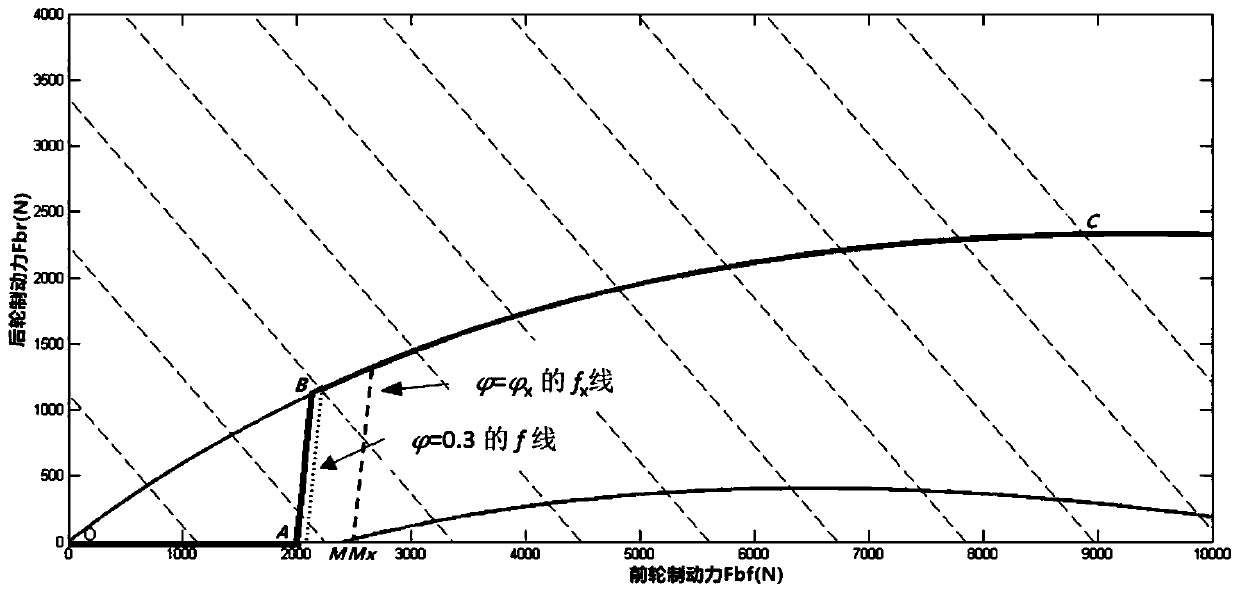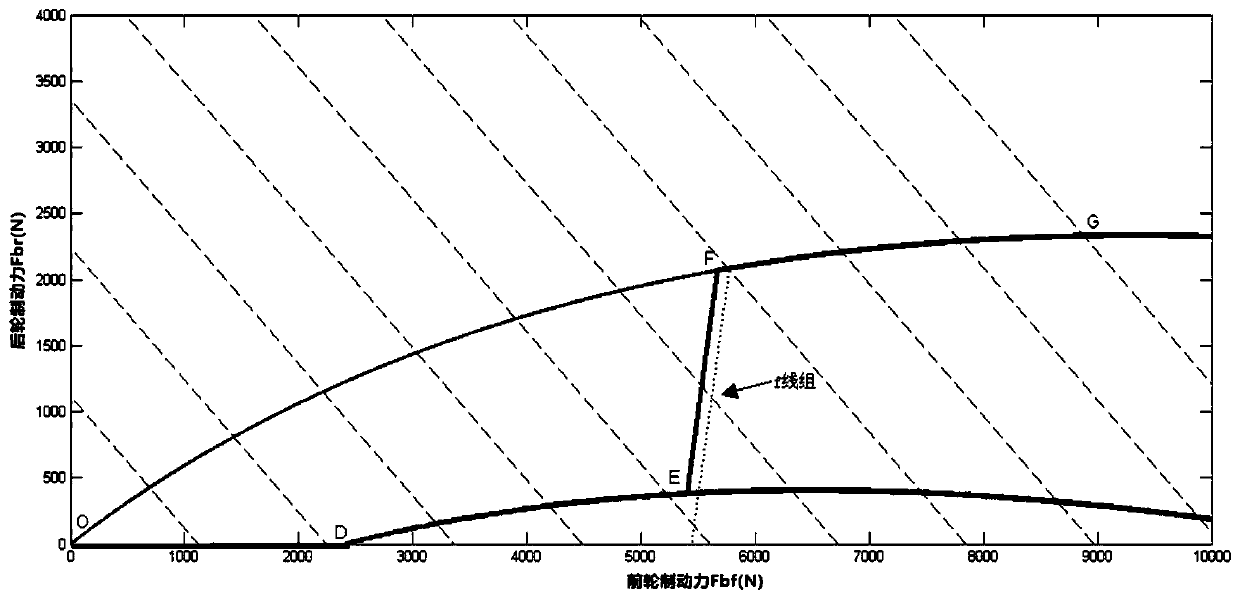Electric automobile regenerative braking control method
A technology for electric vehicles and regenerative braking force, which is applied in electric vehicles, electric braking systems, vehicle components, etc., and can solve problems such as wheel locking, poor driver feeling and energy recovery, and reduced braking safety
- Summary
- Abstract
- Description
- Claims
- Application Information
AI Technical Summary
Problems solved by technology
Method used
Image
Examples
Embodiment Construction
[0063] The present invention will be further described below in conjunction with the accompanying drawings.
[0064] The electric vehicle regenerative braking control method comprises the following steps: Step 1. Set up a road surface eigenvalue calculation method based on the adhesion system, establish a semi-empirical mathematical model of adhesion coefficient and slip rate, introduce the road surface state eigenvalue, identify the road surface condition and the corresponding road surface average adhesion coefficient. Concretely comprise the following steps: step a. according to Burckhardt model, Kiencke model, set up the mathematical model of wheel, introduce slip rate s to represent the ratio of slip component in the wheel motion process, be defined as:
[0065]
[0066] In the formula, ω d is the wheel angular velocity (rad / s); r d is the rolling radius of the wheel (m); V tire is the longitudinal rolling speed of the wheel (m / s);
[0067] When the wheel is purely ...
PUM
 Login to View More
Login to View More Abstract
Description
Claims
Application Information
 Login to View More
Login to View More - R&D
- Intellectual Property
- Life Sciences
- Materials
- Tech Scout
- Unparalleled Data Quality
- Higher Quality Content
- 60% Fewer Hallucinations
Browse by: Latest US Patents, China's latest patents, Technical Efficacy Thesaurus, Application Domain, Technology Topic, Popular Technical Reports.
© 2025 PatSnap. All rights reserved.Legal|Privacy policy|Modern Slavery Act Transparency Statement|Sitemap|About US| Contact US: help@patsnap.com



